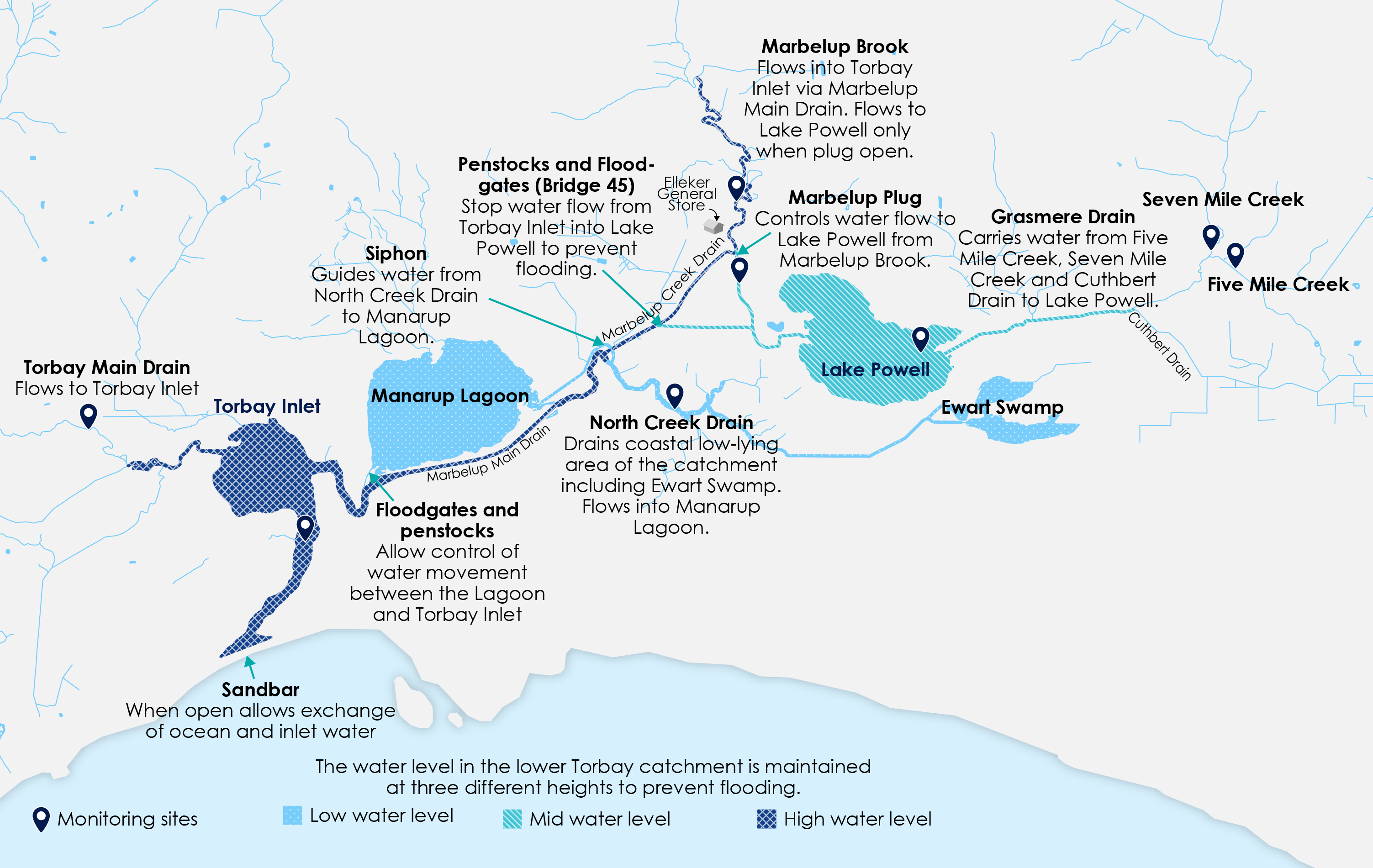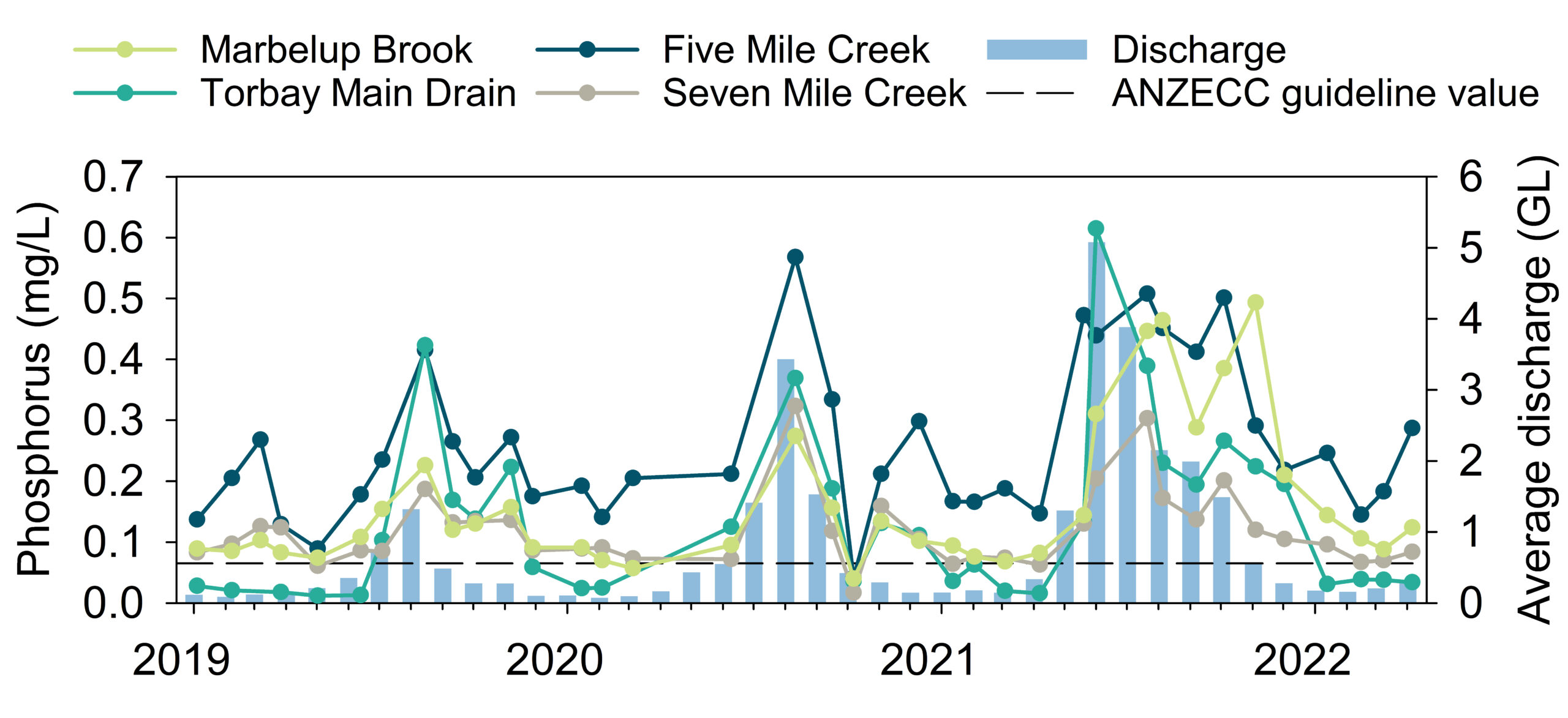Torbay Catchment
About the catchment
The Torbay catchment is highly modified, and the large waterbodies within the catchment are linked by a network of creeks and drains managed by Water Corporation to prevent flooding of the low-lying areas around the lakes and lagoon. Torbay Inlet exchanges water with the ocean at times when the sandbar is open.
The water level in the lower Torbay catchment is maintained at three different heights to prevent flooding. A system of floodgates and penstocks controls the movement of water between the inlet, Lake Powell and Manarup Lagoon. This prevents the water from the inlet and ocean moving up to Lake Powell and Manarup Lagoon, which would cause flooding. However, in times of high rainfall, if water levels in Lake Powell and Manarup Lagoon become higher than the inlet, the floodgates and penstocks can be opened to relieve flooding.

Nutrients in the catchment
Concentrations of phosphorus and nitrogen in the tributaries (creeks and drains) of the Torbay catchment are often high. Rainfall washes nutrients and organic matter from the surrounding land into the waterways, so we normally find higher nutrient concentrations after winter rains. This was the case in 2021, where all the creeks and drains had high concentrations of nutrients that lasted 2–3 months longer than in a typical year.
Five Mile Creek usually has the highest nutrient concentrations, particularly of phosphorus, although all the tributaries have poor water quality. Torbay Main Drain has the lowest nutrient concentrations of all the tributaries, especially during summer.

